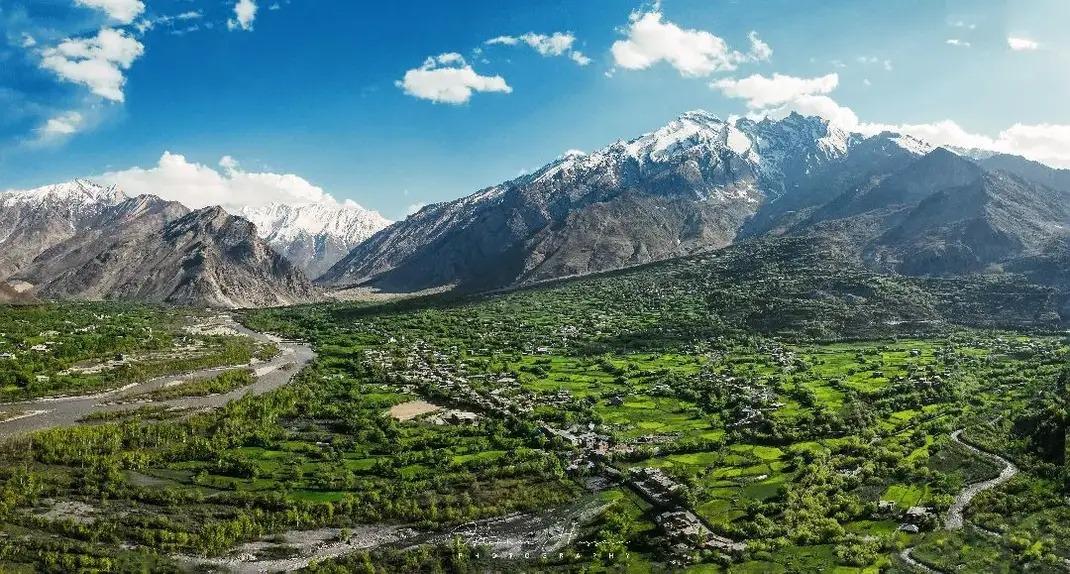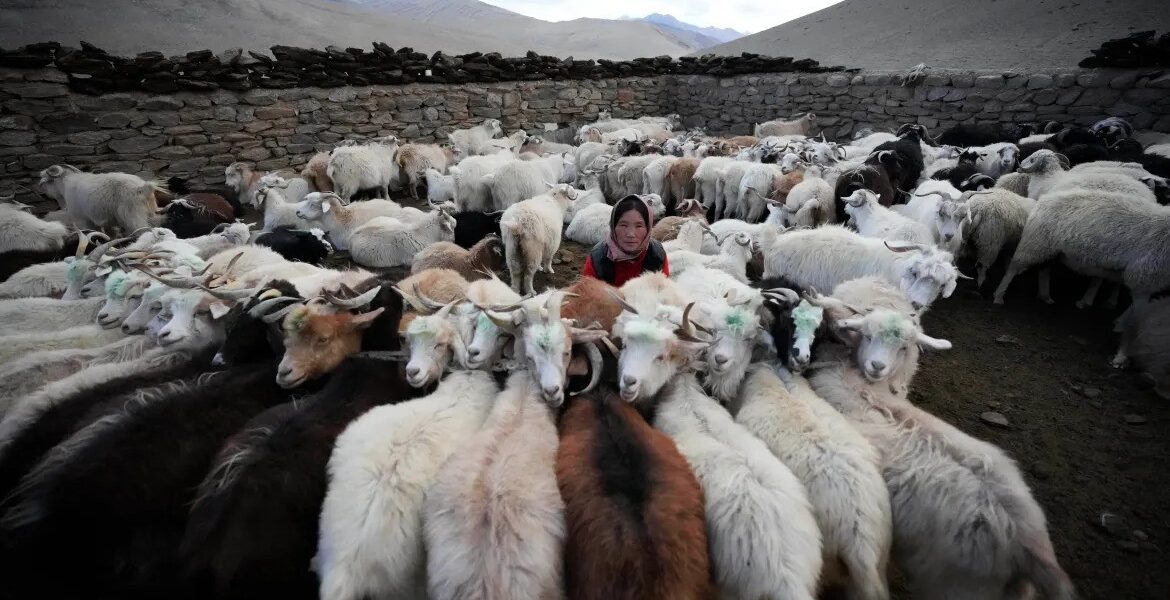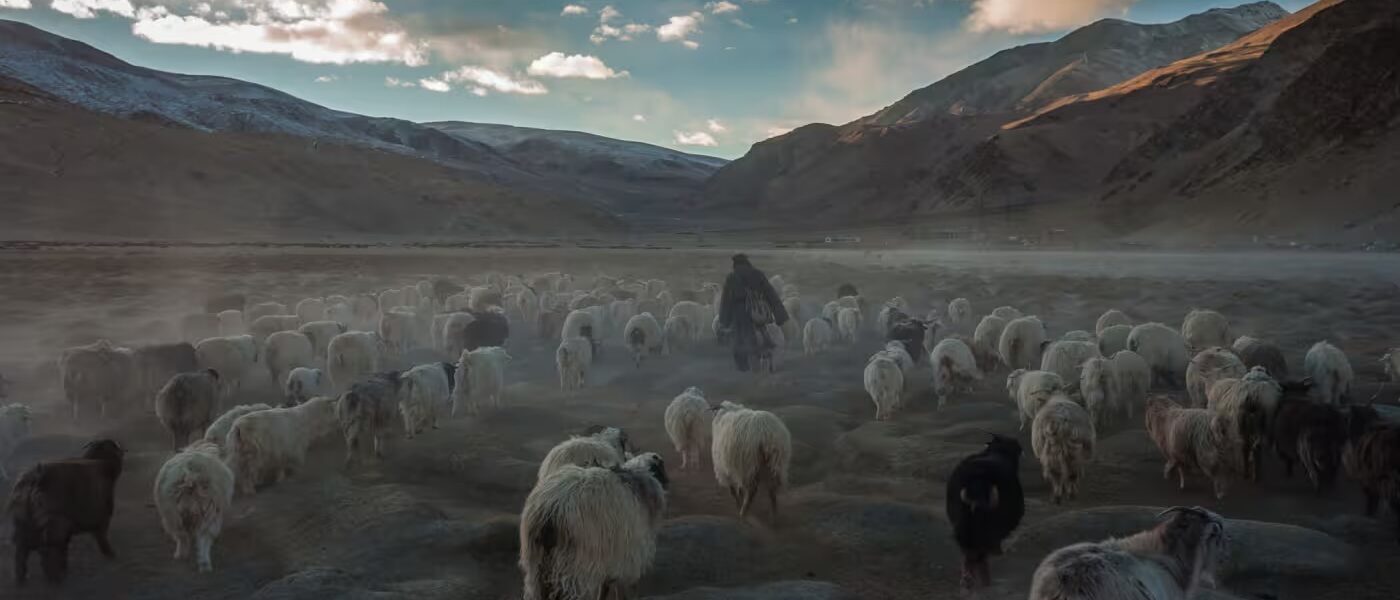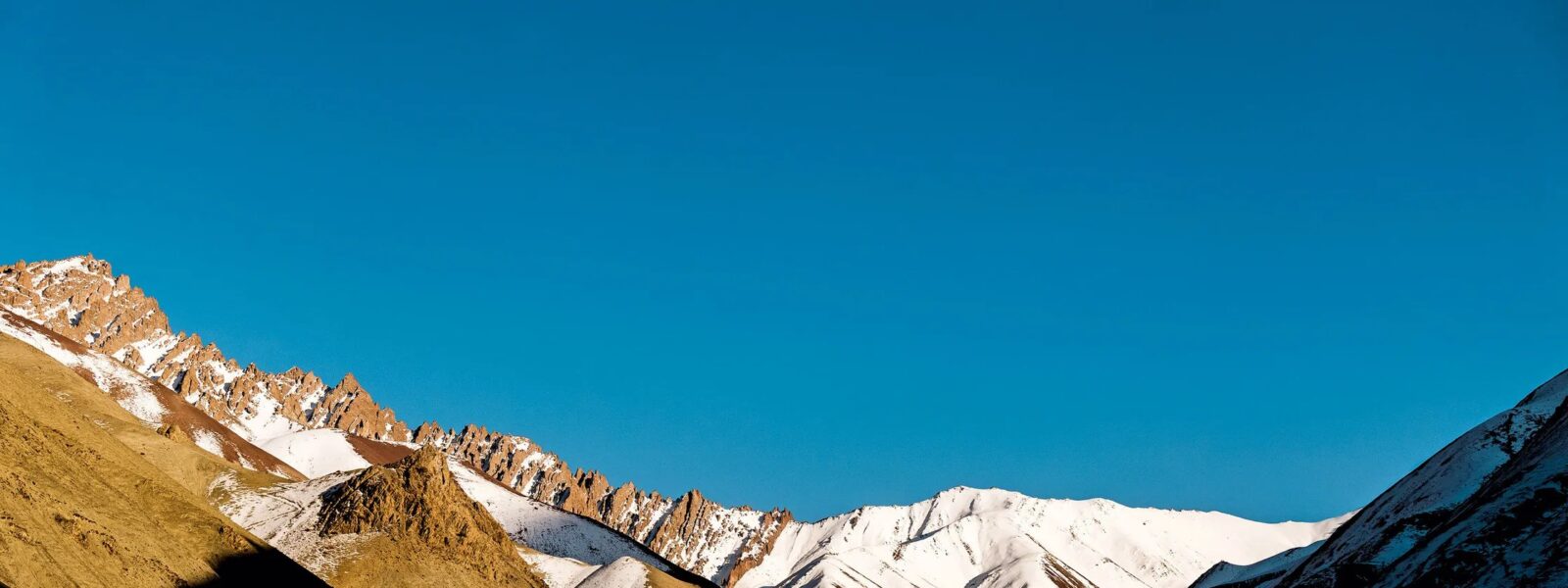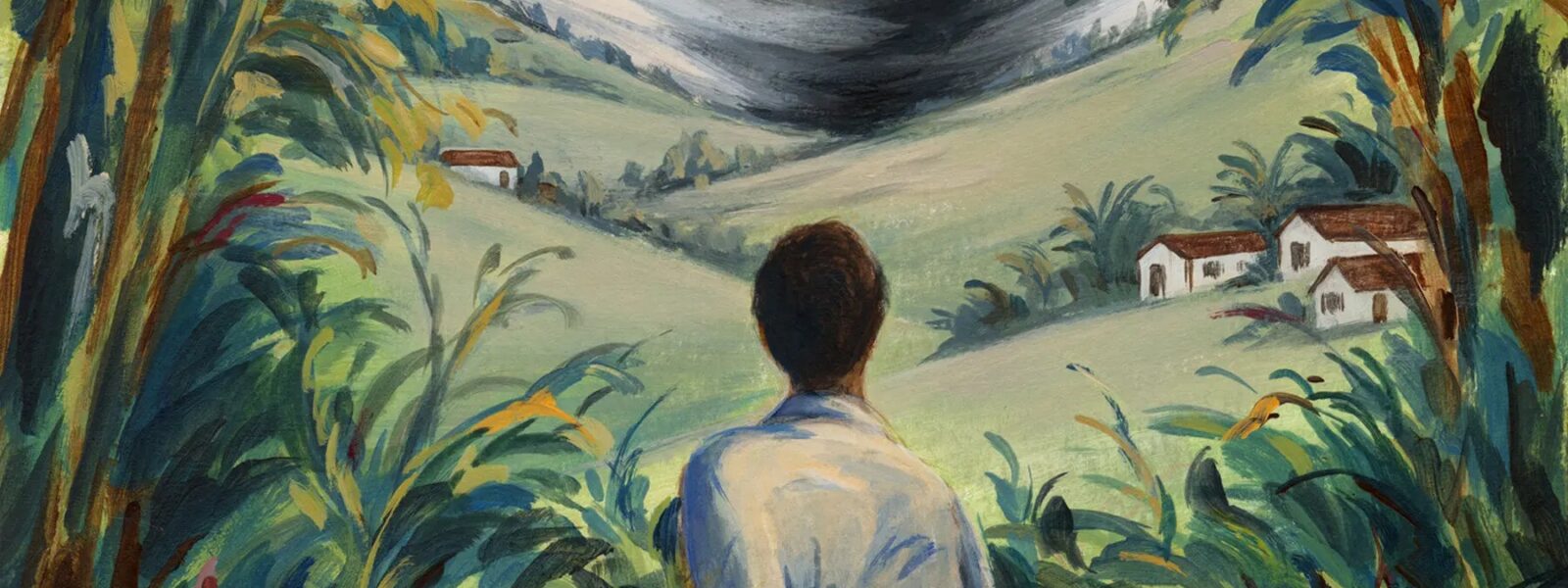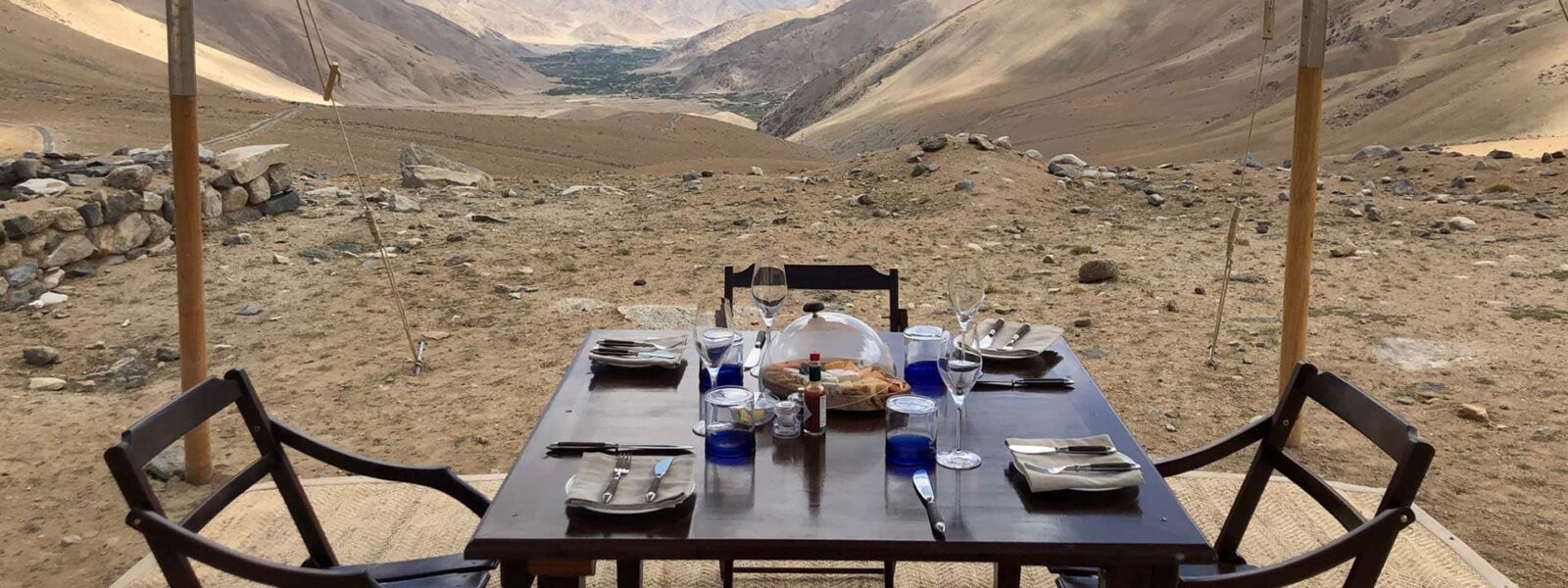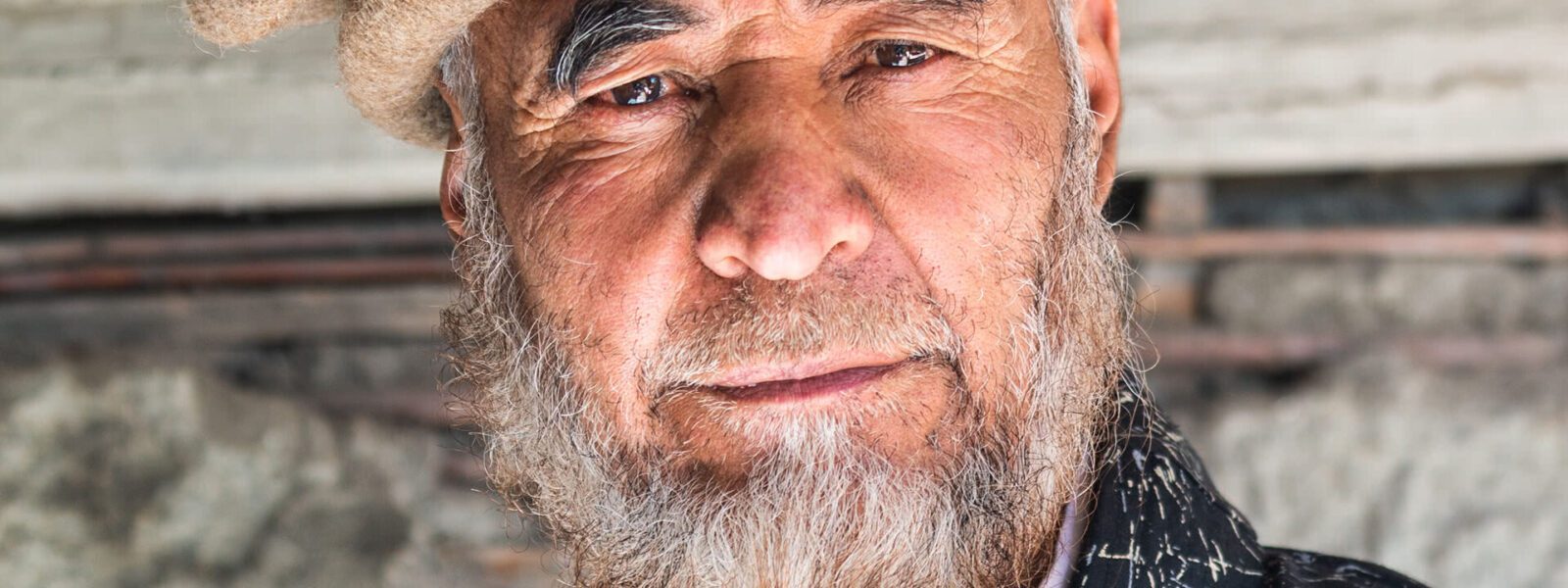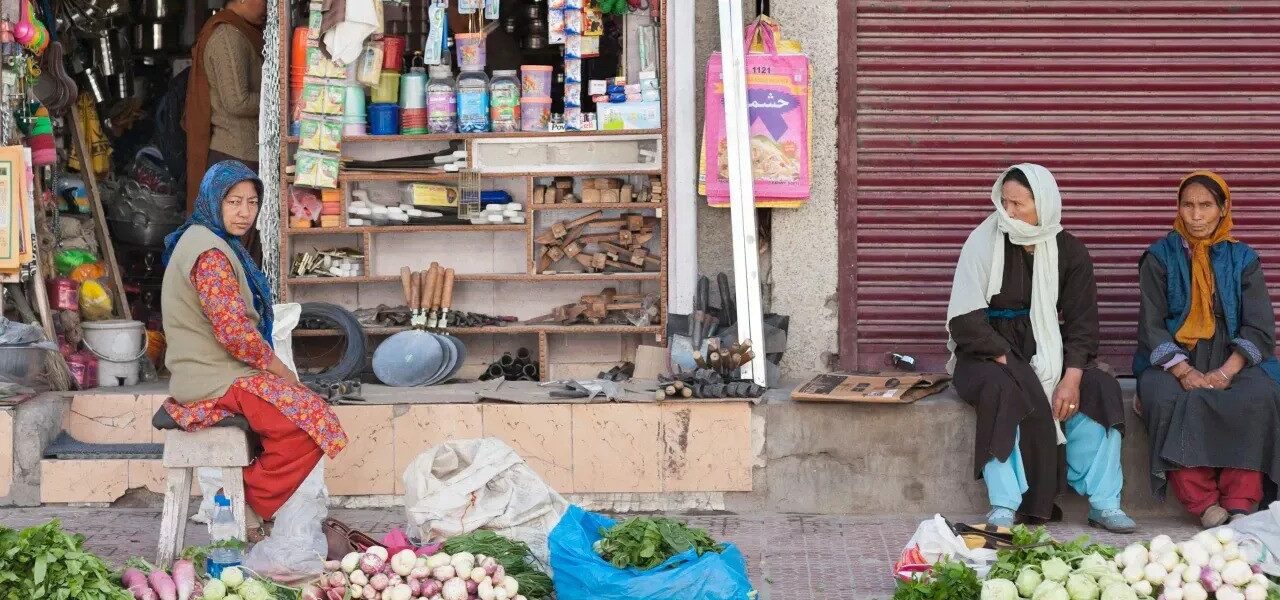Introduction – Why Sankoo is Ladakh’s Best-Kept Secret
Sankoo: The Green Oasis of Suru Valley is one of Ladakh’s most peaceful and overlooked destinations. Deep in the folds of the Himalayas, far from the region’s usual travel circuits, this lush valley offers a unique blend of water, orchards, crops, and tranquility. Nestled in the southern reaches of the Suru Valley in Kargil district, this small but vibrant village remains off the radar of most travelers — and that’s exactly what makes it special.
What makes Sankoo Suru Valley so compelling is its striking contrast to the lunar landscapes of northern Ladakh. While much of the region is defined by its dramatic cliffs and dry desert hues, Sankoo is a world apart — a place where fields of barley and wheat sway in the breeze, where the sound of gurgling streams fills the air, and where snow-capped peaks frame scenes of everyday life. It’s no exaggeration to call it the green soul of Ladakh, and yet so few guidebooks give it the attention it deserves.
Travelers looking to escape the crowds of Leh or the selfie-hunters at Pangong Lake will find a sanctuary here. Sankoo offers that rare combination of natural beauty, cultural authenticity, and utter tranquility. From rustic homestays to friendly farmers eager to share stories over butter tea, the human connection in Sankoo is as much a highlight as the scenery itself. Here, you’re not just passing through; you’re invited to pause, observe, and engage.
And yet, Sankoo is not just a postcard-perfect village. It’s the gateway to the broader Suru Valley and a launch point for expeditions into remote Buddhist monasteries, alpine meadows, and ancient footpaths connecting hidden hamlets. The road to Sankoo winds through some of the most spectacular vistas in the western Himalayas, making the journey itself part of the experience. If you’re seeking an offbeat Ladakh travel destination that embodies sustainability, serenity, and soul, Sankoo should be your next stop.
In this guide, we’ll take you deep into Sankoo’s landscapes, stories, and secrets. Whether you’re a trekker, a cultural enthusiast, a photographer, or simply a lover of peace and quiet, Sankoo promises a side of Ladakh that will stay with you long after the journey ends.
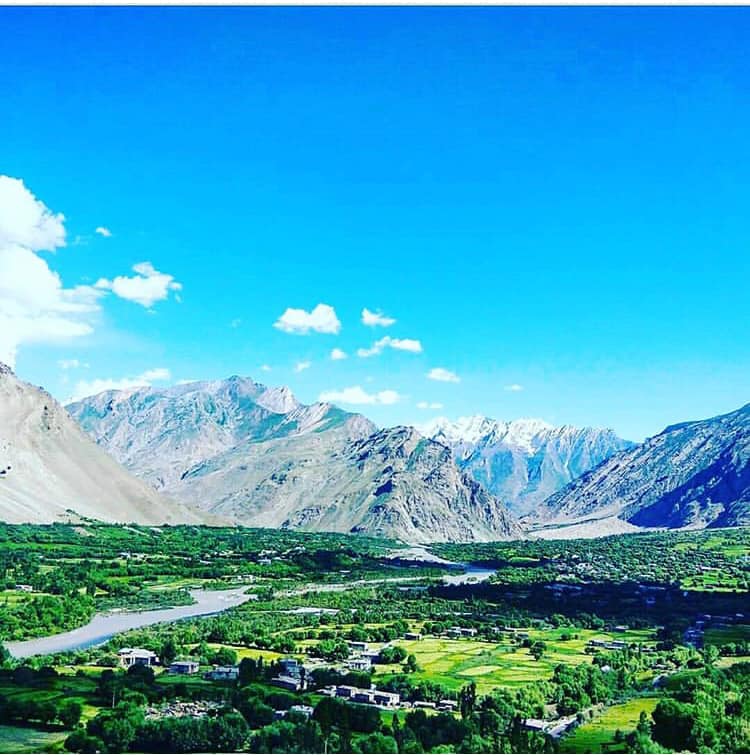
Where is Sankoo and How to Get There?
Tucked away in the southern reaches of the Suru Valley, Sankoo lies about 42 kilometers southeast of Kargil town — the midway point between Leh and Srinagar. Set at an altitude of approximately 2,700 meters, Sankoo sits in a wide, bowl-shaped valley nourished by the Suru River and framed by the mighty Himalayas. Unlike many remote villages in Ladakh that require long hikes or 4×4 convoys to reach, Sankoo is accessible by a well-paved road, making it a hidden gem that’s surprisingly within reach.
Most travelers heading to Sankoo start their journey from Kargil, a key transit hub on the Srinagar–Leh Highway. From Kargil, a scenic drive of less than two hours brings you to this fertile green pocket. The route passes through terraced farmlands, picturesque villages, and winds alongside the Suru River. This stretch of road — often overlooked by tourists — is one of the most peaceful and scenic in all of Ladakh. Expect panoramic views, snow-draped mountains, and the occasional herd of yaks blocking traffic.
If you’re coming from Leh, the capital of Ladakh, you’ll first need to reach Kargil, a 215-kilometer journey that takes roughly 5–6 hours by shared taxi, private vehicle, or bus. From there, it’s a gentle descent into the Suru Valley, making Sankoo one of the easiest offbeat destinations to access in Ladakh. Unlike high-altitude passes like Khardung La or remote trails like those to Zanskar, the road to Sankoo remains open for most of the year, weather permitting.
For the adventurous, a visit to Sankoo can be incorporated into a larger Ladakh road trip itinerary. The village lies en route to Panikhar and the Zanskar Valley, and can be used as a rest stop or even a base for exploring nearby Buddhist monasteries and hiking trails. Whether you’re arriving on two wheels or four, getting to Sankoo is as rewarding as the destination itself.
Transportation options remain fairly limited, so planning ahead is crucial. While shared taxis from Kargil to Sankoo do operate, their frequency can be irregular. Hiring a private taxi or renting a car offers the most flexibility, especially if you plan to explore the surrounding villages and sites. The road infrastructure is solid by Ladakhi standards, with decent cell reception in and around Sankoo village — a rare luxury in this part of the Himalayas.
Whether you’re a photographer chasing perfect light, a cultural explorer yearning for untouched traditions, or a nature lover searching for alpine serenity, the journey to Sankoo is worth every kilometer. As more travelers look beyond Leh for genuine experiences, this green oasis in Ladakh is quietly emerging as a must-visit for those who value authenticity over amenities, and peace over popularity.
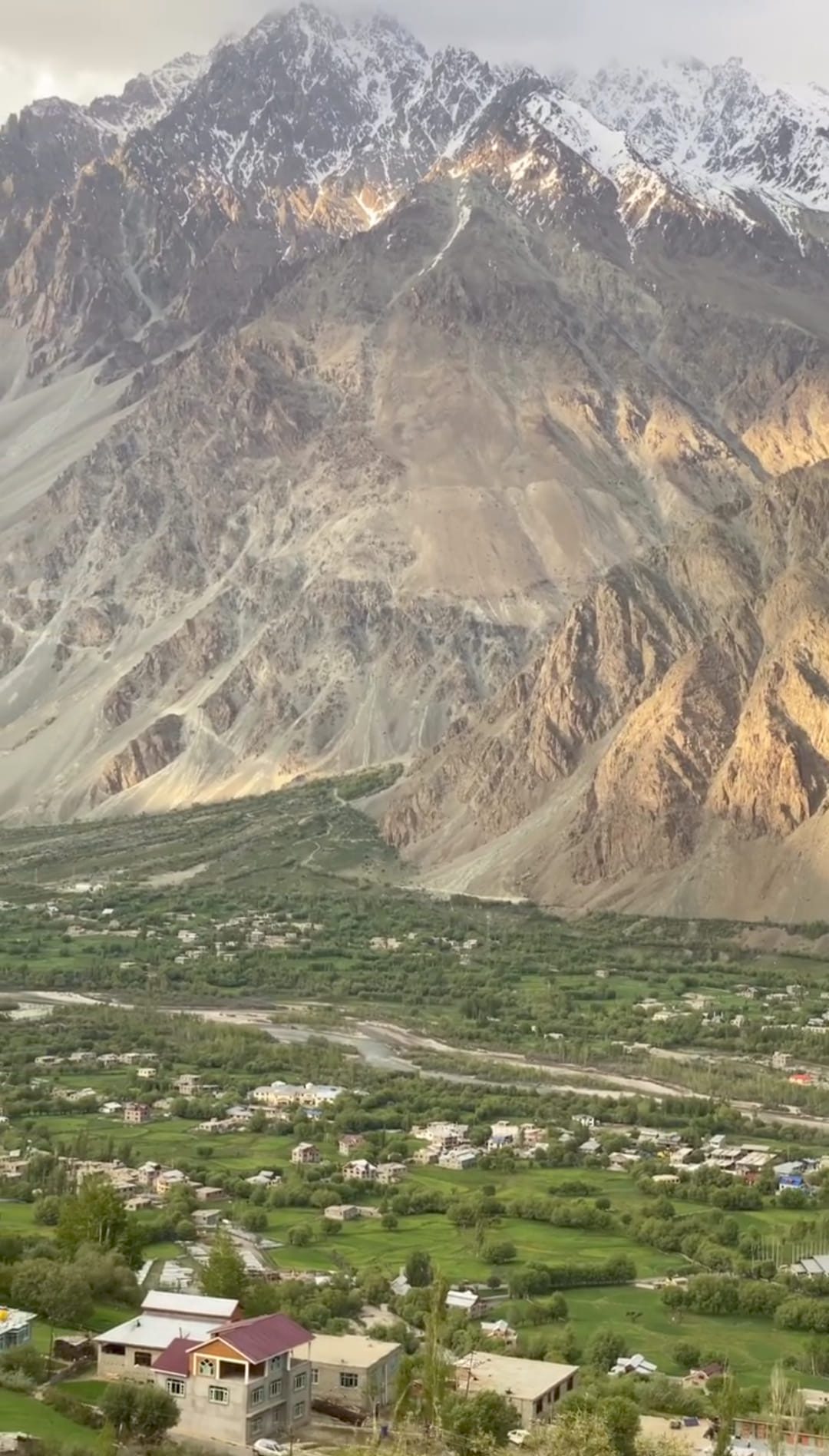
Best Time to Visit Sankoo
Unlike the high-altitude deserts of Leh or the icy windswept plateaus of Changthang, Sankoo enjoys a gentler, more forgiving climate — one of the many reasons it’s often described as the green heart of the Suru Valley. This pocket of fertility comes alive during specific months of the year, offering travelers a chance to witness Ladakh in full color. Knowing the best time to visit Sankoo can make all the difference in your experience, from the landscapes you see to the people you meet.
The ideal time to explore Sankoo is between May and September, when the valley is at its most vibrant. Spring begins with apricot blossoms dusting the trees in soft pink and white, signaling the end of the long, harsh winter. This season — late April to early June — offers photographers, botanists, and nature lovers a unique window into a Ladakh that’s rarely shown in travel brochures. Melting snow feeds the Suru River, and the fields begin to burst with barley, wheat, and vegetables. Local families begin working the land again, and the valley hums with life.
June, July, and August are considered the high summer months, and they’re by far the most comfortable for travel. During this time, Sankoo is at its greenest, with clear skies, warm days, and crisp mountain nights. The temperatures are pleasant, hovering between 15°C to 25°C during the day. These months are ideal for hiking, village exploration, and visiting apricot orchards in full fruit. The longer daylight hours give you ample time to enjoy the scenery and connect with local families.
September is another excellent choice, especially if you prefer solitude and golden hues over crowds. By this time, the fields are being harvested, and the leaves begin to turn shades of amber and bronze. The air becomes cooler, but the skies remain just as clear. This is a fantastic month for photographers hoping to capture the contrast of a fading summer against the backdrop of snow-dusted peaks.
Traveling to Sankoo during winter (November to March) is technically possible but not recommended for most travelers. Snowfall can block the roads, and temperatures can plummet well below freezing. The village becomes very quiet during this time, and accommodations may be limited. However, for the adventurous soul prepared for freezing nights and looking for absolute solitude, winter in Sankoo reveals an untouched, mystical beauty. But come prepared — both physically and mentally.
For those planning a trip to Ladakh and looking to include an offbeat yet rewarding destination, timing your visit to Sankoo right will elevate the experience. Whether you’re hoping to wander through lush valleys in northern India, experience Ladakhi hospitality in bloom, or simply relax in nature’s lap, the months between May and September deliver Sankoo at its finest.

Top Things to Do in Sankoo
Though modest in size, Sankoo offers a surprisingly rich variety of experiences for travelers who are willing to slow down, stay a while, and observe the rhythm of life in this verdant Ladakhi valley. From cultural exchanges with local families to slow hikes through apricot orchards and visits to lesser-known monasteries, Sankoo invites you to explore Ladakh not as a tourist, but as a welcomed guest. If you’re searching for things to do in Sankoo beyond the typical photo stops, here’s a list of soulful and sustainable activities to add to your journey.
1. Stroll Through the Apricot Orchards
One of the defining features of Sankoo is its lush landscape, nurtured by the Suru River and fertile soil. In summer, the village turns into a patchwork of fruit-laden trees, especially apricots. Walking through these orchards — some hundreds of years old — is a treat for the senses. The scent of ripe fruit, the sound of bees buzzing between branches, and the sight of snow peaks in the distance make this a meditative experience. This is a must-do for those interested in agri-tourism in Ladakh or simply seeking a quiet, natural retreat.
2. Engage with Local Village Life
Sankoo offers an authentic opportunity to connect with traditional Ladakhi culture. Spend a morning helping locals in the fields, learning how they irrigate crops using ancient water channels, or join a family for tea and homemade bread inside a traditional mud-brick home. These moments are not manufactured for tourism — they’re spontaneous, real, and deeply human. Travelers interested in authentic Ladakhi village experiences or cultural immersion will find Sankoo incredibly rewarding.
3. Visit the Karpo-Khar Monastery and Local Shrines
Though not as grand as the gompas of central Ladakh, Sankoo’s religious sites offer a quiet spirituality. The Karpo-Khar Monastery, perched on a small hill nearby, provides stunning views of the valley and is home to a few resident monks. Local shrines scattered across the fields and hills are also worth visiting — each with its own folk legends and peaceful ambiance. These visits offer a sense of Buddhist heritage in Suru Valley and allow you to understand how religion and everyday life are intertwined here.
4. Go on a Day Hike or Nature Walk
Surrounded by mountains, Sankoo is an excellent base for short nature walks and day hikes. Paths along the river, trails through poplar groves, and ridgeline routes offer beautiful vantage points of the valley. These hikes are not strenuous, making them perfect for families, photographers, or anyone who just wants to breathe fresh Himalayan air. Use these walks to explore offbeat trekking routes in Ladakh or to connect more deeply with the landscape.
5. Attend a Local Festival or Seasonal Gathering (if timed right)
If your visit coincides with the harvest or a local religious event, you may be lucky enough to witness one of the village’s vibrant cultural gatherings. From folk dances in the fields to communal feasts and storytelling around firelight, Sankoo’s festivals are deeply rooted in tradition. They also reflect the blend of Buddhist and Islamic cultures unique to this part of Ladakh.
No matter your travel style, the charm of Sankoo lies not in big-ticket attractions, but in its gentle rhythm, warm people, and lush, life-filled valley. It is a place to slow down, reconnect with the earth, and embrace Ladakh in its most nurturing form.
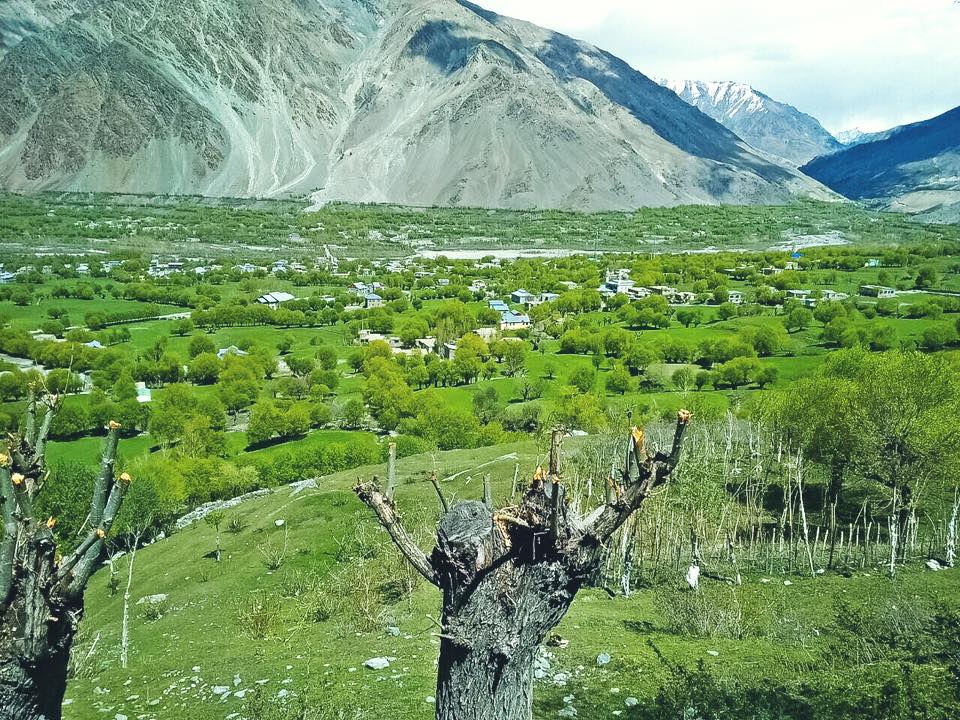
Local Culture and Religion in Sankoo
In the tapestry of Ladakh’s cultural landscape, Sankoo stands out as a quiet but fascinating blend of traditions. Unlike some parts of Ladakh where a single religious identity dominates, Sankoo is a place of coexistence — a village where Buddhist and Islamic cultures live side by side, not just in geography but in everyday life. This coexistence is reflected in the architecture, language, festivals, and most importantly, in the mindset of the people.
The majority of Sankoo’s population follows Islam, and the village is home to some of the oldest and most respected Muslim communities in Ladakh. As you walk through the winding paths of the village, you’ll pass traditional Ladakhi homes with prayer rugs laid out in courtyards, the distant call to prayer echoing softly across the valley. Modest mosques, built from local stone and wood, blend seamlessly into the mountainous landscape. Yet, even here, the influence of Buddhist culture is never far.
Just a few kilometers from the village center, you’ll find small Buddhist shrines and chortens, built and maintained by the Buddhist families who still live in and around the region. These sites are often simple — a whitewashed dome, prayer flags fluttering in the breeze — but they carry deep meaning for those who worship here. One such landmark is the Karpo-Khar Monastery, where a handful of monks continue age-old rituals in the midst of green fields and grazing cattle. This quiet presence serves as a reminder that the Suru Valley was once an important link on the cultural and spiritual trade routes between Zanskar, Baltistan, and central Ladakh.
The spirit of Sankoo’s culture is one of peaceful cohabitation. Festivals, weddings, and seasonal gatherings often feature neighbors of both religions coming together in celebration. You might attend a Muslim wedding where Buddhist neighbors are honored guests, or witness a local harvest festival where Sufi music blends with Ladakhi dance. The shared agricultural lifestyle and close-knit social structure have nurtured a tradition of tolerance that feels increasingly rare in the modern world.
Language in Sankoo reflects this rich interweaving of faiths and cultures. While Ladakhi and Balti dialects are spoken in Buddhist and Shia Muslim households respectively, most residents are also fluent in Hindi and Urdu, making communication easy for Indian travelers. English is also understood by the younger generation, especially among those working in tourism or education.
For the curious traveler, Sankoo offers more than just scenic views — it offers a chance to witness a living example of cultural harmony in Ladakh. Here, faith is practiced with humility, and identity is defined more by community than by creed. Visitors who spend time talking with locals, participating in family meals, or simply observing daily rituals will come away with a deeper appreciation for the region’s quiet resilience and open-hearted spirit.
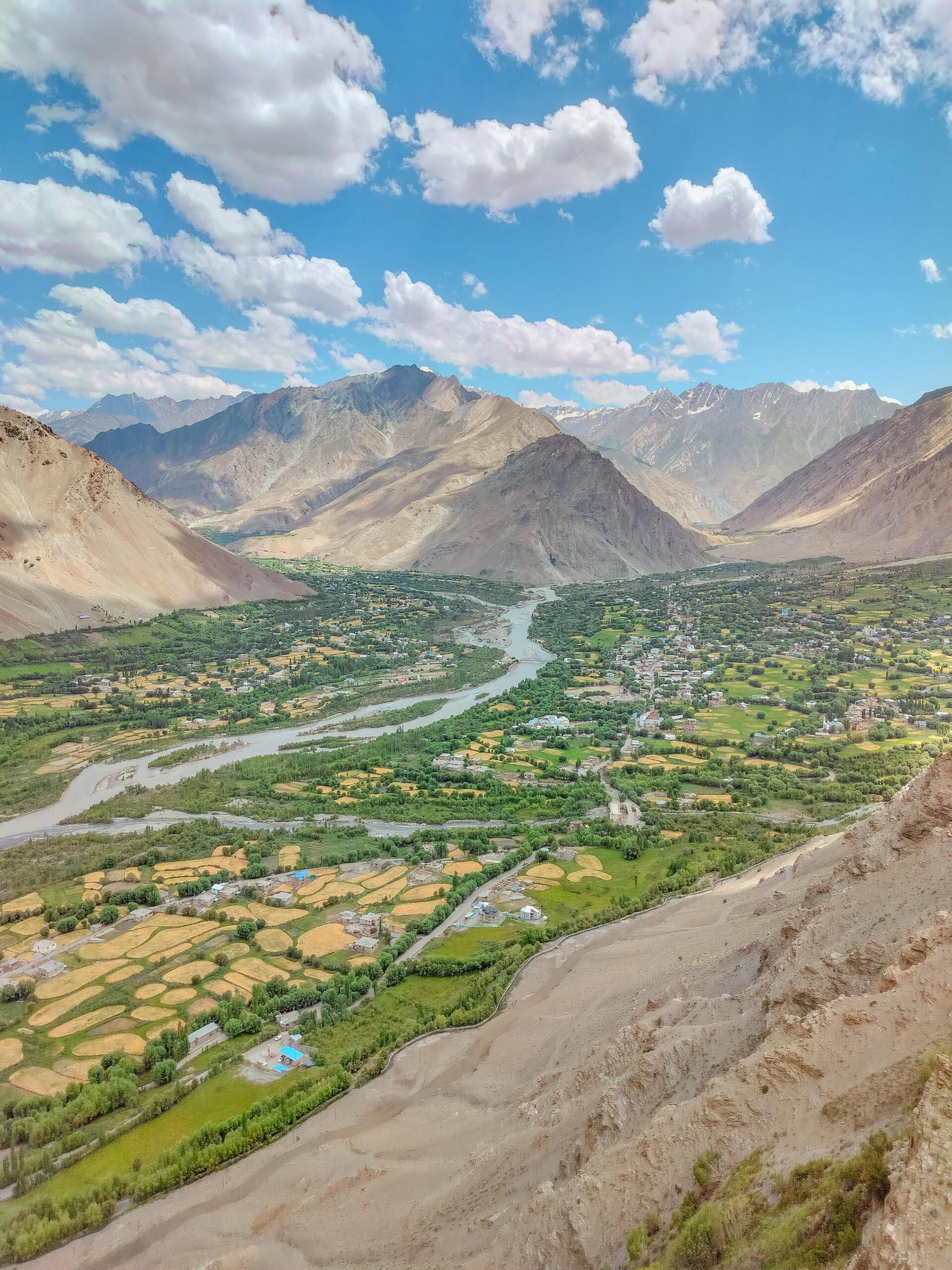
Where to Stay in Sankoo
Accommodation in Sankoo may be limited in terms of luxury, but it more than makes up for that with heartfelt hospitality, local character, and some of the most peaceful surroundings you’ll find in all of Ladakh. If your idea of a great stay involves waking up to the sound of a river, sipping butter tea in a sunlit courtyard, and falling asleep under a sky full of stars, then Sankoo’s homestays and guesthouses will feel like the perfect retreat.
Most travelers opt for traditional Ladakhi homestays, where local families open up their homes to visitors. These stays are more than just a place to sleep — they’re a chance to experience daily life in the Suru Valley. Rooms are usually simple but clean, with thick woolen bedding, wooden floors, and windows that look out over fields or mountains. Meals are often included, and you can expect home-cooked dishes made from locally grown ingredients — apricot stew, barley roti, and fresh greens from the garden.
Guesthouses in Sankoo tend to be family-run as well, offering slightly more amenities such as attached bathrooms, solar-heated water, and sometimes even Wi-Fi. These are great for travelers who want a balance between comfort and cultural authenticity. What they lack in modern polish, they make up for with warmth and genuine care. The hosts often double as guides, cooks, and storytellers, sharing tales about the valley, its history, and even helping you plan hikes or visits to nearby villages.
If you’re traveling during the summer months (June to September), it’s wise to book your stay in advance, especially if you’re looking for something specific — such as a room with a river view or proximity to a particular trail. While Sankoo is still far off the radar for most tourists, it has been gaining quiet popularity among those seeking offbeat eco-tourism in Ladakh. As a result, a handful of newer, eco-conscious accommodations have also emerged in nearby hamlets, offering mud-brick construction, composting toilets, and solar lighting.
Camping is another option for the more adventurous traveler. The meadows near the Suru River provide excellent spots for pitching a tent, and some homestay owners will even help arrange gear and meals. Whether you choose to sleep under a roof or under the stars, staying in Sankoo offers a deep connection to the land and its people — something that luxury hotels in bigger cities can rarely replicate.
For those looking to truly unwind, learn, and immerse, Sankoo’s accommodations are not just places to stay — they’re part of the journey. They offer you a front-row seat to Ladakhi village life, where hospitality is sacred, and time moves with the rhythm of the mountains.
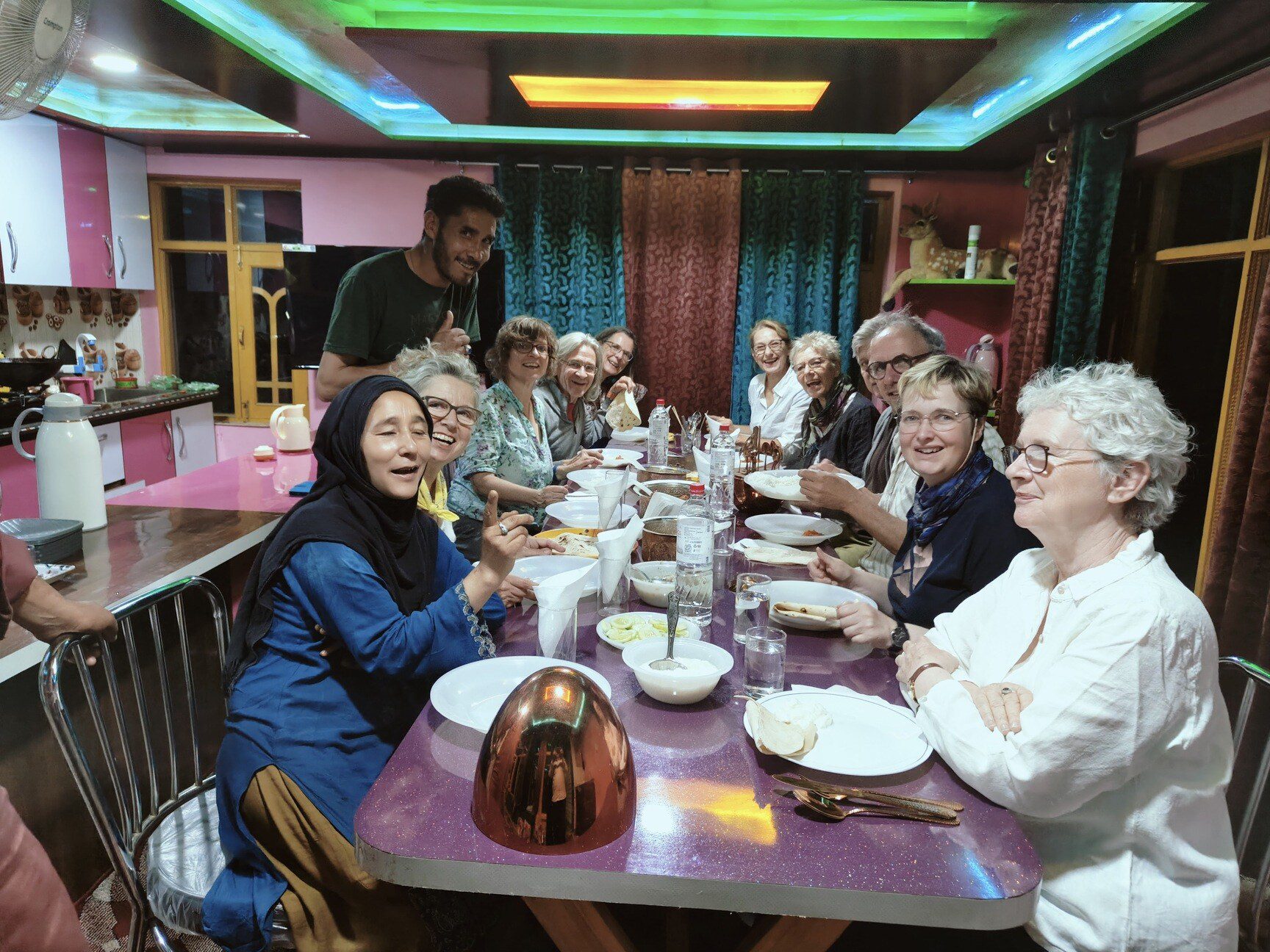
Suggested Itinerary – Sankoo and Beyond
Planning a journey to Sankoo is not just about checking off a destination — it’s about crafting a slower, richer experience that opens up an entirely different face of Ladakh. Whether you’re a solo traveler, a couple seeking peace, or an explorer looking to link up with treks in the greater Suru and Zanskar regions, Sankoo makes a perfect base. The village may be small, but it’s ideally positioned for short adventures, cultural immersion, and scenic drives. Here’s a sample Sankoo travel itinerary to help you make the most of your stay.
Day 1: Arrival in Kargil → Drive to Sankoo
Begin your journey in Kargil town — easily accessible from either Leh or Srinagar. From Kargil, hire a private taxi or hop in a shared vehicle for the short yet stunning 42-kilometer drive to Sankoo. En route, stop for photos along the Suru River and admire the transformation in landscape as arid cliffs give way to greenery. Arrive in Sankoo by afternoon, settle into a local homestay, and spend the evening walking through the village, greeting locals and soaking in the peaceful valley air.
Day 2: Explore Sankoo — Orchards, Monasteries, and Local Life
Dedicate this day to truly experiencing Sankoo. Start your morning with a visit to a local apricot orchard and walk along irrigation channels to see how agriculture thrives here. Next, hike to the nearby Karpo-Khar Monastery for panoramic views and a moment of quiet reflection. Return to your homestay for a traditional Ladakhi lunch, then spend the afternoon engaging with locals — visit the village school, help in the fields, or enjoy tea in a neighbor’s home. In the evening, take a slow walk to the riverside and witness the sun setting behind the jagged peaks.
Day 3: Day Trip to Panikhar or Drive Further into Suru Valley
On your third day, take a scenic drive or shared jeep to Panikhar, about 30 km south of Sankoo. This tiny hamlet offers majestic views of the Nun-Kun massif and serves as a gateway to deeper explorations into Zanskar. Along the way, stop at tiny villages and roadside chai stalls, where you can interact with locals and hear about life in these remote highlands. If you’re feeling more adventurous, extend your trip deeper into the valley toward Rangdum or plan a trek with local guides.
Optional Extension: Sankoo to Rangdum Trek or Zanskar Road Trip
For trekkers, Sankoo can be the launchpad for multi-day adventures into Rangdum or the lesser-trodden trails leading into Zanskar. These require planning, porters, and permits, but offer an unforgettable experience through alpine meadows, ancient monasteries, and high-altitude passes.
Whether you stay two nights or two weeks, the key to a meaningful visit is to slow down and allow Sankoo’s pace to become your own. This is not a place to rush through. It’s a place to feel — the quiet, the history, and the extraordinary stillness that only remote Ladakhi villages can offer. This offbeat Ladakh route invites you to look beyond the checklist and into the heart of a living, breathing cultural landscape.
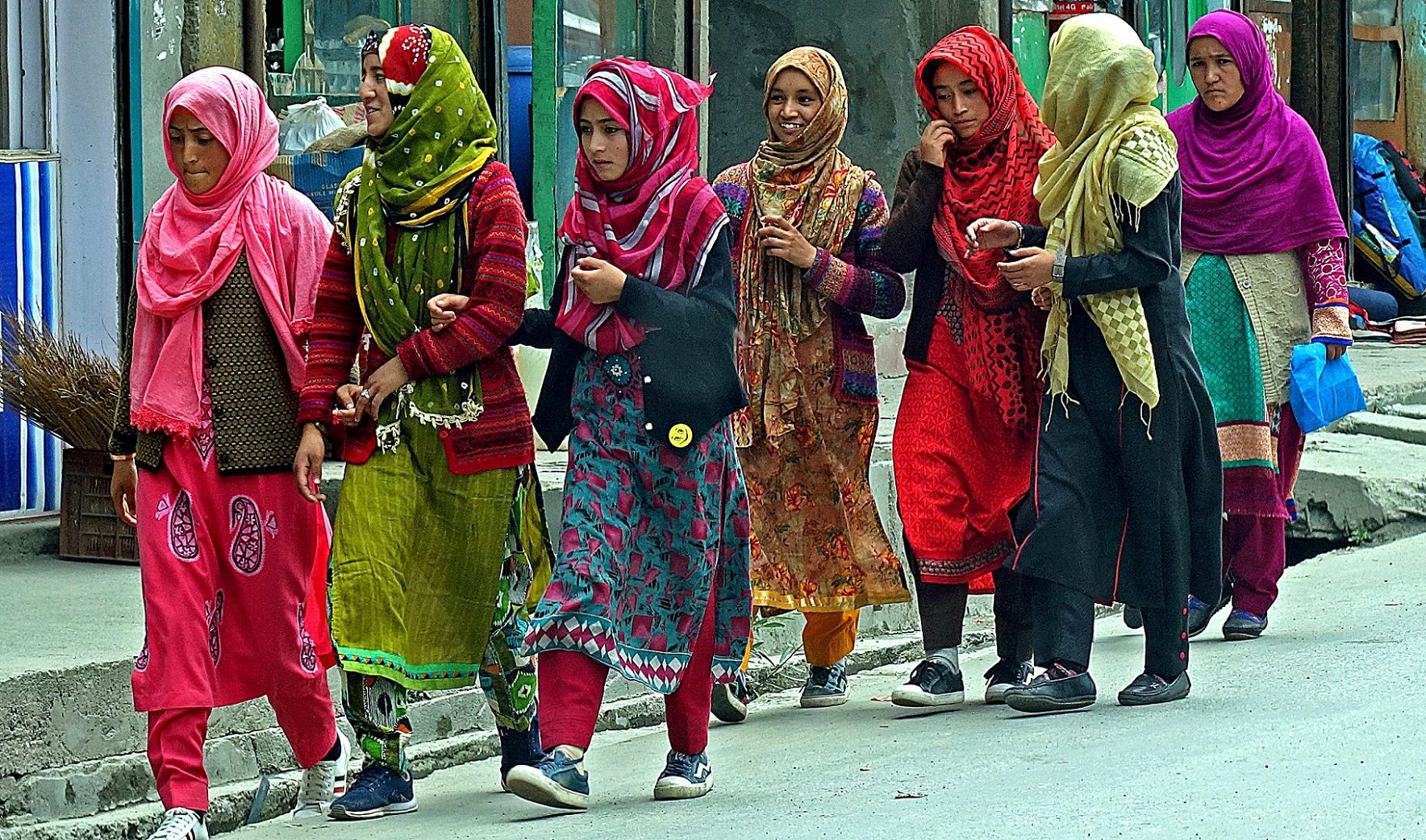
Final Thoughts – Why Sankoo Deserves a Spot on Your Ladakh Itinerary
In a region as dramatic and diverse as Ladakh, it’s easy to be dazzled by the towering passes, iconic monasteries, and salt-blue lakes that dominate social media feeds. Yet, beyond the spotlight, there exists a quieter, more nurturing side of Ladakh — one that thrives in the slow rustle of apricot leaves, the shared laughter of neighbors, and the soft light that falls across terraced fields at dusk. Sankoo, nestled in the fertile heart of the Suru Valley, is a place that embodies this quieter spirit.
Far from the over-traveled roads and tourist-heavy circuits, Sankoo offers a rare blend of nature, culture, and calm. It is not the kind of destination where you arrive, snap photos, and move on. It’s the kind of place that invites you to stay — to breathe deeply, walk slowly, and engage meaningfully. From its harmonious blend of Buddhist and Muslim traditions to its family-run homestays and orchard-lined paths, Sankoo delivers on what many seasoned travelers crave: authenticity.
Whether you’re planning a Ladakh itinerary that already includes popular highlights like Nubra or Pangong, or you’re deliberately choosing a more offbeat Ladakh travel experience, Sankoo fits in effortlessly. It offers a refreshing counterpoint to the more arid and high-altitude regions of the north. Here, you’ll find green valleys, flowing water, and fertile land — all of which make it a true green oasis in Ladakh. And in an age where sustainable, low-impact travel is more important than ever, choosing Sankoo is also a responsible decision.
What makes Sankoo truly unforgettable isn’t just its scenery, but its people. Hospitality here is not an industry — it’s a way of life. Guests are treated like extended family, and meals are shared with stories, not just menus. The connection you form with the land and its people will linger long after you’ve returned home. That’s the kind of memory that defines great journeys.
So if you’re crafting a journey to the Himalayas that’s built on more than checklists — if you’re seeking silence instead of selfies, meaning over movement, and genuine cultural exchange — then Sankoo belongs on your map. In this hidden gem of the Suru Valley, you’ll discover that sometimes the most beautiful places are the ones that don’t try to impress you — they just quietly welcome you in.

